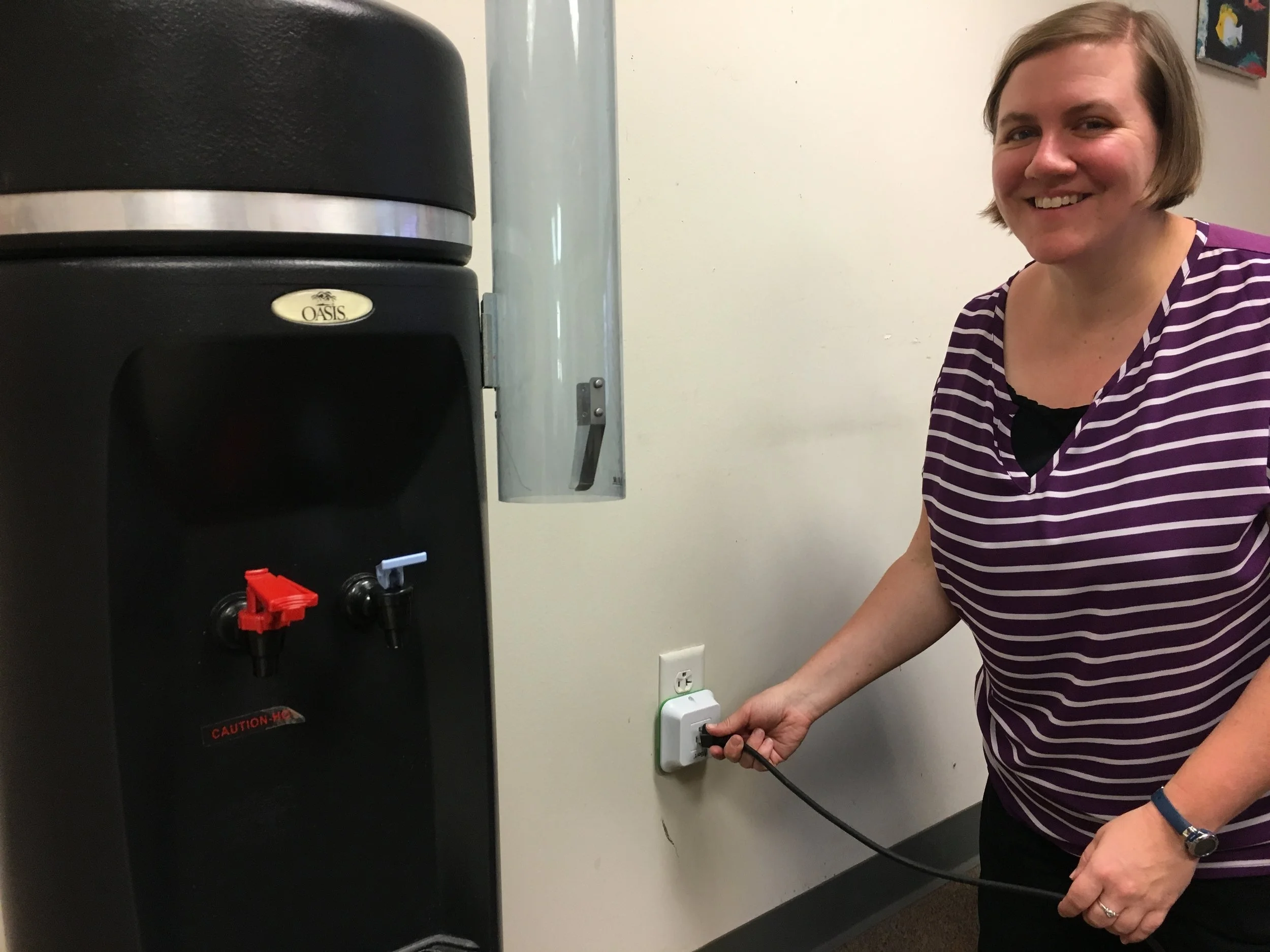Ghosts, ghouls, and goblins aren’t the only things silently haunting your school this Halloween. Lurking behind fluorescent “Exit” signs, hiding in the teacher's lounge behind stacks of reusable coffee mugs there are “energy vampires” slowing sucking energy from deep within the walls of your school.
These “energy vampires” are appliances that continue to draw power from electrical outlets, even when turned off or idle. As their name implies these vampires stealthily suck energy and money with few noticing their consequences.
Not scared yet? What if I told you that a single desktop computer sucks approximately 311 kilowatts of energy each year which equates to an lost energy cost of over $35.00 annually. If an institution has a computer lab with 200 computers that is a total annual loss of over $7,000.00!
“As a school, we are always looking for ways we can reduce our energy consumption, save money, and continue to raise the bar on our commitment to being a “green” school,” according to Frank Aloise, SCH’s Chief Financial Officer.
This past winter, SCH worked with Scott Yetter, CEO of Best Energy Reduction Technologies (BERT), and sustainability consultants Boyer Sudduth Environmental Consultants to investigate the power of energy vampires on campus. Yetter’s company developed and patented the Bert® Plug Load Management System, which lowers standby commercial energy expenses up to 65% by automatically and remotely controlling the power consumption of thousands of plug load devices. According to Yetter, “The worst energy vampires in schools are projectors, printers, laptop charging carts, coffee machines and vending machines.”
After monitoring a weekend’s plug load using the BERT devices, the school learned that the top two energy vampires were the television monitors (averaging 150 watts) and the vending machines (averaging 240 watts). After that, other energy vampires were the large copiers and water cooler (averaging 80 watts). Total weekend load (Friday pm to Monday am) for the limited sample is almost 43000 watt hours or 43 kilowatt hours.
This BERT device experiment calculated only a weekend’s worth of energy loss from common appliances throughout the school. When these calculations are applied throughout the entire year the total energy loss is approximately 2,236 kilowatt hours - and that is just on weekends! Fortunately all of the devices listed above have standby modes or can be unplugged without damage or information loss.
“Based on SCH’s results from the BERT Device analysis, school representatives now know which devices are the worst “energy vampires” stated Mary Ann Boyer. “We can work directly with the school to determine strategies to address these issues. Plans are already underway for math students to use this real world data to raise awareness and change behavior on campus around the importance of energy conservation.”
By Mary Kate O’Brien, Writer-in-Residence with Boyer Sudduth Environmental Consultants, LLC.
SCH’s Upper School Science Teacher, Ellen Kruger, plugging in a BERT device to measure energy consumption.



